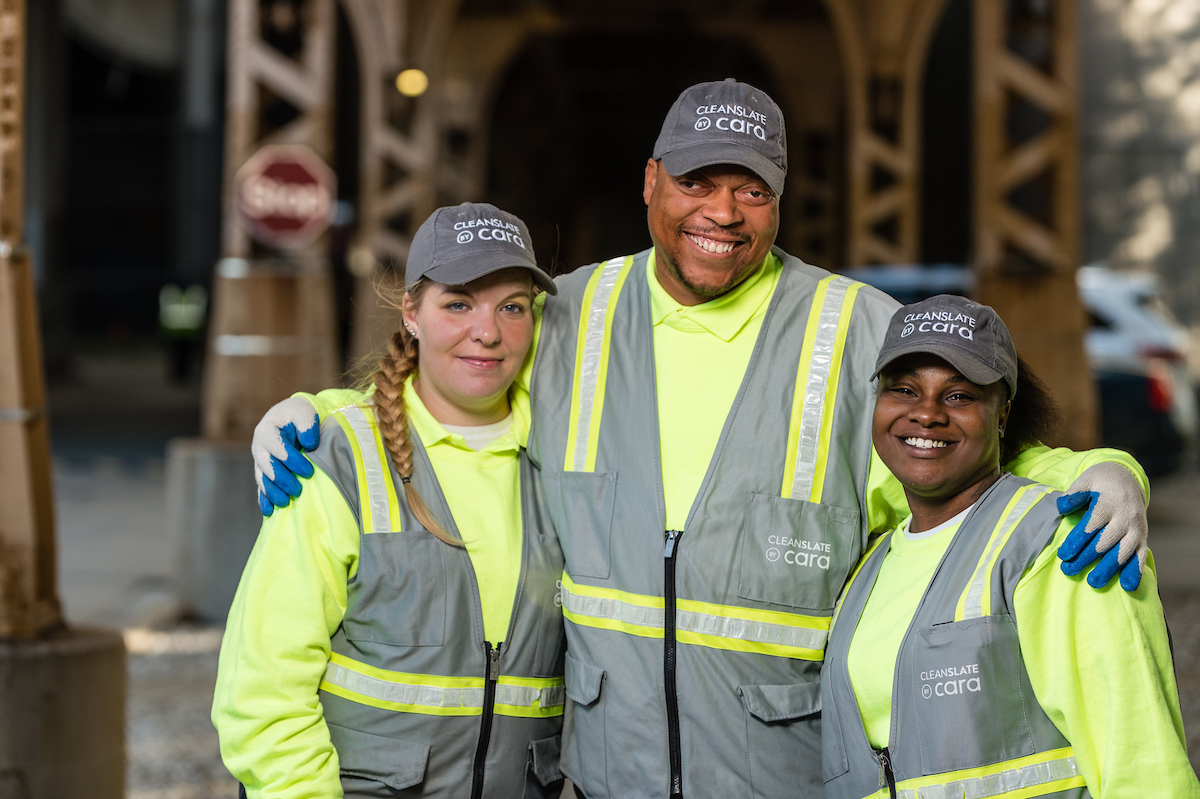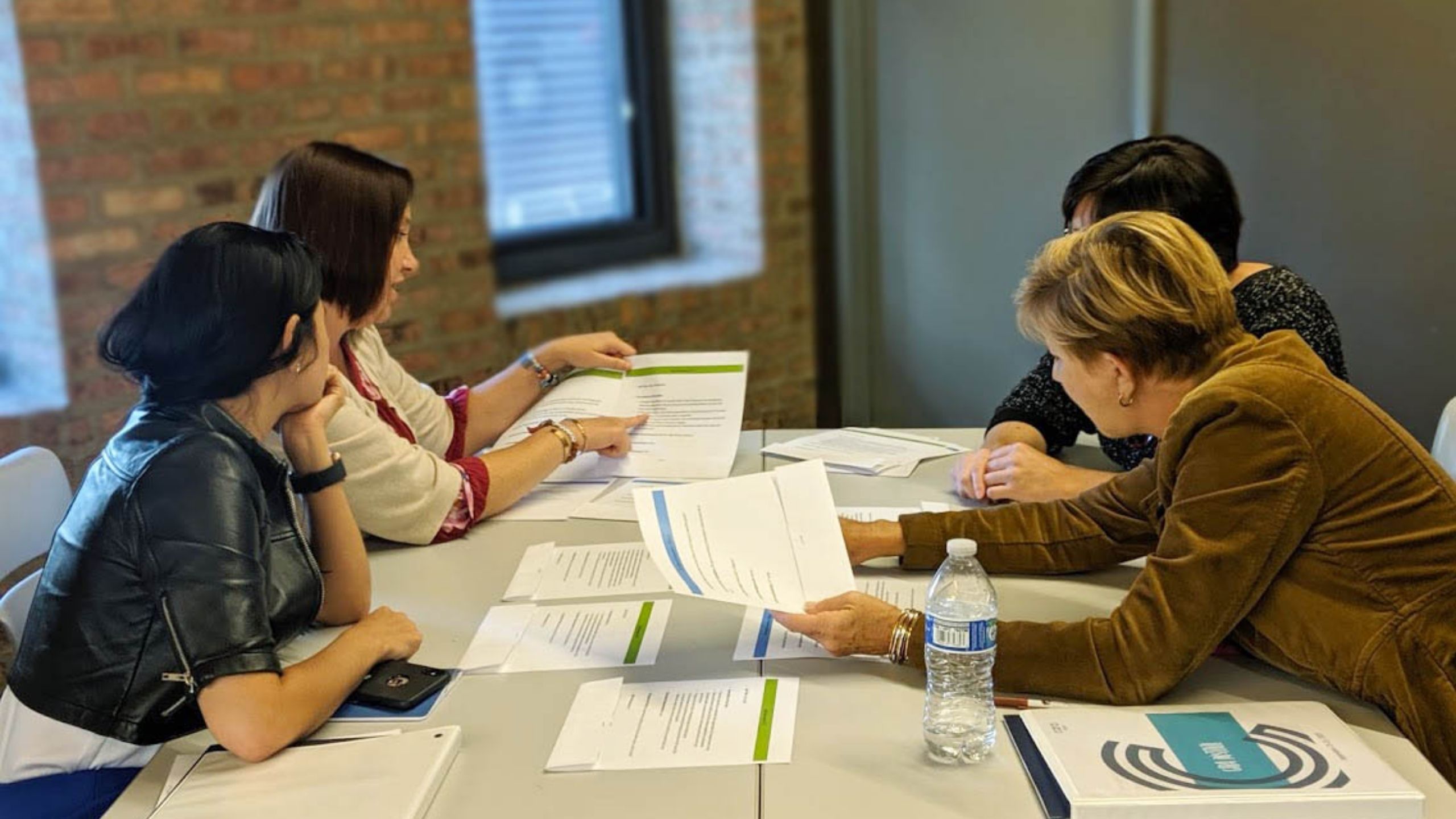The Benefits of Finding Social Enterprise Equilibrium: Cash and Change

Three quarters of a typical nonprofit’s budget is spent on programming, easily making programming its largest cost center. It’s difficult, but a nonprofit operating a social enterprise can change the equation where you have a business that is bottom lining cash to fund the nonprofit and creating training opportunities to participants.
Embedding program characteristics into a profitable business takes some art and science to find the space where the social enterprise can maximize its mission and profits. While finding the right balance is a win for the nonprofit as the business’s market share grows, it can have implications on for profit competitors who may push down their staff’s wages or it may steal business from minority- or woman-owned companies, thus creating unwanted tension.
This is a real issue – a significant number of nonprofits with excellent missions close their doors every year. They start with fantastic intentions for individual or community transformation, but they fail to consider that they love their mission more than their prospective donors. They fail to realize that they are competing for limited dollars and donors have attractive alternatives.
According to Charity Navigator, 70% of nonprofits spend three-quarters or more of their annual budget on programming. This massive investment makes sense because their programming is the heart and soul of why they were created. But the enormous demand for cash from programming is a primary culprit that topples many nonprofits and closes the doors on their work.
But what if we can flip this dilemma? What if we create programming that is not a cost center, but a revenue center for the organization?
The solution is to develop a market competitive business that can be leveraged as a program experience that operates in the black. Just like any other business, its success needs to be measured by its ability to generate profits. But unlike other businesses, it is expected to provide a training experience for individuals who have very limited work histories, education, and technical skills.
In 2005, the workforce development nonprofit Cara launched a meager neighborhood beautification business, Cleanslate, to provide additional training to their “highest barriers to employ” students in transitional jobs. The business employed ten students who cleaned up some of Chicago’s dirtiest streets. Annually, the business’s revenue grew and so did the jobs it created. But simultaneously a mountain of debt was growing as well.
At the beginning of 2011, Cleanslate was nearly $1 million in debt to Cara. That motivated us to reformat Cleanslate operations and programming with the goal of achieving profitability so that our mission could be self-sustaining and enduring. We reviewed both sides of the coin: how could we improve our business operations and be more efficient with our mission? We implemented a multi-pronged approach: We adjusted our compensation to be more in line with our competitors, hired permanent staff members with broader and deeper experience, and we withdrew Cleanslate front-line staff from many activities such as enterprise-wide staff meetings so that the business could stay open to meet our customers’ demanding needs and schedules. And it worked. This immediately drove up gross revenue by $40,000 annually. We also decreased morning Motivations, an iconic piece of Cara programming and culture, from seven days a week to just one day. This resulted in a business savings of $75,000 annually.
But the big conundrum still existed: How do we marry work and programming? To that end, we employed a new protocol. This focused on Cleanslate crew supervisors coaching their team members using key program elements, evaluating each participant’s work performance daily with focus on Cara’s five core competencies. Evaluation data is shared with our program staff to determine further improvements and job interview opportunities. We set a high bar on the basics such as time management and professionalism, program participants arrive to Cleanslate in cohorts to provide support and accountability, and they meet one day per week with Cara program staff to sharpen their job readiness. We also offer ongoing commitment to our program participants. We continue to provide our employees with a position for as long as they still need a job opportunity. Ultimately, we will stick with an individual until they take that next step into a valuable, permanent career opportunity.
Honestly, most companies are very hesitant to hire from the population that we serve. More than 60% of our participants have criminal convictions, a third have no GED or diploma, and on average they have been unemployed for 25 months. Prospective employers often file their resumes in a round metal bin. But here’s the good news that helps prove our model – once placed into a permanent job our participants’ one year retention rate is 72%, which is 23% higher than what the Department of Labor reports for jobs in the same industry verticals. This is a huge win for employers and it keeps them coming back to us for new candidates.
Another reason Cleanslate has been successful is that we have real risk as a mission-driven business. We have real customers, real assets, and a real budget. Cleanslate leadership is accountable for its budget and operational performance. If we lose a contract, we decrease the number of people that we can employ. Participants understand this and push themselves to succeed, to create future opportunities for individuals coming behind them. Cleanslate’s success is the program participants’ success. Real risk equals real reward.
How did we financially kick start this business and where does Cleanslate’s current funding come from? Cara was gifted a Goldman Sachs executive for one year to help launch Cleanslate. With this, $200,000 in support was given to Cara for Cleanslate’s initial capital needs. It took financial support from Cara to keep Cleanslate operating for its first five years. While all startups require investment in the early stages, Cleanslate’s was accentuated as it was lacking some of the necessary business acumen and leaned too heavily in the direction of a traditional nonprofit workforce development program rather than erecting a framework to support both mission and financial success. For the past seven years, Cleanslate has been in the black while deriving 95% of its revenue from bid contracts, just like any other for-profit firm. It is a huge (and unusual) win when a nonprofit-owned business with strong programming nets profit at the end of the year. This profit helps to support the operating needs of the nonprofit parent, Cara, while the social enterprise, Cleanslate, covers its own operating and programming expenses.
Developing a business that provides exterior maintenance like Cleanslate has some drawbacks. Cleanslate’s hard skill development is in the very low barrier to enter sectors such as janitorial services. The career vertical doesn’t promise $100,000 salaries in the near term. While, the career tracks in these fields exist, they provide a bit of a slow climb for growth opportunities.
The most obvious risk with this type of venture is wrong-sizing the mission versus margin. We sliced away small and less critical parts of our mission to control cost. We also found creative ways to keep core elements of our program, but communicate them in a different medium. Social entrepreneurs quickly realize that they will never fully arrive at a Zen state of balance. It takes a constant re-imagining of how to get the most mission out of the business and vice versa.
In the past decade, social enterprises have proven that they are legitimate vendors for contracts. In some parts of the country we see new set-asides for social purpose businesses. Two negative implications could arise out of these. First, the social purpose businesses may eat into work that has traditionally been awarded to minority and women owned businesses. This could be a divisive issue between these groups which historically have had strong affinity. Second, heavily subsidized social enterprises can speed the race to the bottom for everyone. If these social enterprises drastically discount their prices because of grants, then for-profit firms would have to match price, therefore pushing down their employee wages.
Finding the equilibrium between mission and financial performance can be very tricky for a nonprofit owned social enterprise. The seas are difficult to navigate, but when the equilibrium is found it can help fund and achieve the lasting success that the nonprofit set out to accomplish.
Brady Gott is the Managing Director of Cleanslate. He earned a BA in Urban Ministry from Moody Bible Institute and a MBA at the University of Notre Dame Mendoza College of Business. He and his wife, Joy, have their very own Brady Bunch with three boys and three girls.


